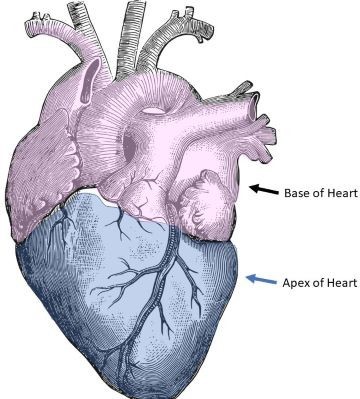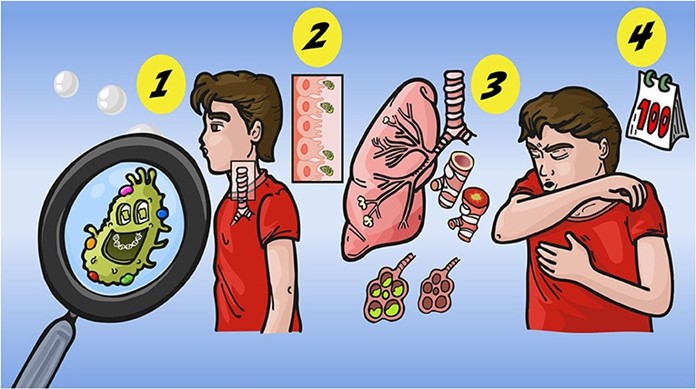A nurse is performing a pre-college physical assessment on an adolescent. Which of the following immunizations should the nurse anticipate administering?
Bacille Calmete-Guérin (BCG) vaccine
Pneumococcal polysaccharide vaccine
Influenza vaccine
Meningococcal polysaccharide vaccine
The Correct Answer is D
Choice A reason: This choice is incorrect because the BCG vaccine is not recommended for adolescents in the United States. The BCG vaccine is a vaccine that protects against tuberculosis (TB), a bacterial infection that affects the lungs and other organs. It may be used for children who live in countries where TB is common or who have a high risk of exposure to TB, but it is not routinely given in the United States because of the low incidence of TB and the possibility of false-positive results on TB skin tests.
Choice B reason: This choice is incorrect because the pneumococcal polysaccharide vaccine is not recommended for adolescents unless they have certain medical conditions. The pneumococcal polysaccharide vaccine is a vaccine that protects against pneumococcal disease, a bacterial infection that can cause pneumonia, meningitis, or sepsis. It may be used for adults who are 65 years or older or who have chronic diseases, immunosuppression, or cochlear implants, but it is not routinely given to adolescents who are healthy.
Choice C reason: This choice is incorrect because the influenza vaccine is recommended for adolescents every year, not just before college. The influenza vaccine is a vaccine that protects against influenza, a viral infection that affects the respiratory system. It may be given as an injection or a nasal spray, and it may prevent or reduce the severity of influenza and its complications. It is recommended for everyone who is 6 months or older, especially those who have a high risk of influenza-related complications.
Choice D reason: This choice is correct because the meningococcal polysaccharide vaccine is recommended for adolescents before college. The meningococcal polysaccharide vaccine is a vaccine that protects against meningococcal disease, a bacterial infection that can cause meningitis, septicemia, or death. It may be given as a single dose or a booster dose, and it may prevent outbreaks of meningococcal disease in crowded settings such as dormitories or military barracks. It is recommended for adolescents who are 11 to 12 years old, with a booster dose at 16 years old, or for those who are entering college and have not been previously vaccinated.
Nursing Test Bank
Naxlex Comprehensive Predictor Exams
Related Questions
Correct Answer is D
Explanation
Choice A reason: This choice is incorrect because the radial artery is not an ideal site to assess the heart rate in an infant. The radial artery is located on the thumb side of the wrist, and it can be palpated by placing two fingers over it. It may be used for adults or older children who have a strong pulse, but it may be difficult to locate or feel in an infant who has a small or weak pulse.
Choice B reason: This choice is incorrect because the carotid artery is not an ideal site to assess the heart rate in an infant. The carotid artery is located on either side of the neck, and it can be palpated by placing two fingers over it. It may be used for adults or older children who have a cardiac arrest or shock, but it may be risky to use in an infant who has a fragile neck or airway.
Choice C reason: This choice is incorrect because the brachial artery is not an ideal site to assess the heart rate in an infant. The brachial artery is located on the inner side of the upper arm, and it can be palpated by placing two fingers over it. It may be used for infants or young children who have a blood pressure measurement, but it may be uncomfortable or inaccurate to use for a heart rate assessment.
Choice D reason: This choice is correct because the apex of the heart is an ideal site to assess the heart rate in an infant. The apex of the heart is located at the fifth intercostal space on the left midclavicular line, and it can be auscultated by placing a stethoscope over it. It may be used for infants or young children who have a regular and strong heartbeat, and it may provide the most accurate measurement of the heart rate.

Correct Answer is B
Explanation
Choice A reason: This choice is incorrect because mumps is not the common name for pertussis. Mumps is a viral infection that causes inflammation of the salivary glands, especially the parotid glands. It may cause symptoms such as fever, headache, and swelling of the cheeks or jaw. It can be prevented by vaccination with the measles-mumps-rubella (MMR) vaccine.
Choice B reason: This choice is correct because whooping cough is the common name for pertussis. Pertussis is a bacterial infection that causes severe coughing spells, which may be followed by a high-pitched whoop sound or vomiting. It may cause complications such as pneumonia, seizures, or brain damage, especially in infants and young children. It can be prevented by vaccination with the diphtheria-tetanus-pertussis (DTaP) vaccine.
Choice C reason: This choice is incorrect because the fifth disease is not the common name for pertussis. The fifth disease is a viral infection that causes a rash on the face, trunk, and limbs, which may resemble a slapped cheek appearance. It may cause mild symptoms such as fever, runny nose, or joint pain. It usually affects children and is self-limiting.
Choice D reason: This choice is incorrect because chickenpox is not the common name for pertussis. Chickenpox is a viral infection that causes an itchy rash with fluid-filled blisters all over the body. It may cause symptoms such as fever, headache, or loss of appetite. It can be prevented by vaccination with the varicella-zoster (VZV) vaccine.

Whether you are a student looking to ace your exams or a practicing nurse seeking to enhance your expertise , our nursing education contents will empower you with the confidence and competence to make a difference in the lives of patients and become a respected leader in the healthcare field.
Visit Naxlex, invest in your future and unlock endless possibilities with our unparalleled nursing education contents today
Report Wrong Answer on the Current Question
Do you disagree with the answer? If yes, what is your expected answer? Explain.
Kindly be descriptive with the issue you are facing.
